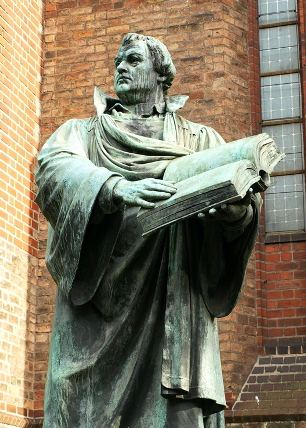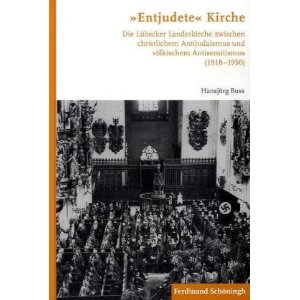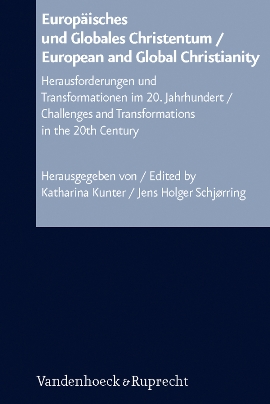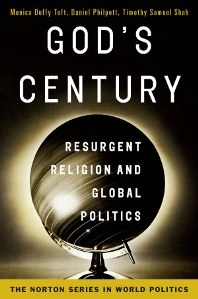ACCH Quarterly Vol. 18, No. 3, September 2012
Review of Sascha Hinkel, Adolf Kardinal Bertram. Kirchenpolitik im Kaiserreich und in der Weimarer Republik. Veröffentlichungen der Kommission für Zeitgeschichte, Reihe B: Forschungen 117 (Paderborn: Ferdinand Schöningh, 2010), ISBN: 978-3-506-76871-1.
By Lauren N. Faulkner, University of Notre Dame
 In his first published book based on doctoral work in Mainz, Sascha Hinkel does not set an easy task for himself. His subject is Adolf Cardinal Bertram, chairman of the Fulda Conference of Bishops from 1920 to 1945 and, as such, the most powerful Catholic bishop in Germany. Although Bertram is “among the most controversial German bishops of the 20th century” (336), he lacks a definitive, updated biography.[1] Bertram’s accommodation of the Nazi regime is notorious: “his opponents criticize him as vigorously as his proponents defend him.” (336) Rather than recounting Bertram’s well-known Nazi-era activities, Hinkel observes “a younger Bertram … who was not prejudiced by later events.” (12) The Kaiserreich and Weimar Republic are the twin epicenters of the book as Hinkel seeks to explain Bertram’s post-1933 behavior in his pre-1933 experiences. Thus, Bertram’s activities during the Third Reich are limited largely to a ten-page section at the end of the final chapter. The result is a portrait of a man who was not yet the acquiescent cardinal who kowtowed to Adolf Hitler. And though Hinkel’s biographical approach limits him to the reach of one man, there is no denying Bertram’s considerable influence in the most turbulent years of the twentieth century. His actions impacted Catholic Germans, Vatican policy, the ethnic Poles who resided in Prussian Upper Silesia before the post-WWI territorial redistributions.
In his first published book based on doctoral work in Mainz, Sascha Hinkel does not set an easy task for himself. His subject is Adolf Cardinal Bertram, chairman of the Fulda Conference of Bishops from 1920 to 1945 and, as such, the most powerful Catholic bishop in Germany. Although Bertram is “among the most controversial German bishops of the 20th century” (336), he lacks a definitive, updated biography.[1] Bertram’s accommodation of the Nazi regime is notorious: “his opponents criticize him as vigorously as his proponents defend him.” (336) Rather than recounting Bertram’s well-known Nazi-era activities, Hinkel observes “a younger Bertram … who was not prejudiced by later events.” (12) The Kaiserreich and Weimar Republic are the twin epicenters of the book as Hinkel seeks to explain Bertram’s post-1933 behavior in his pre-1933 experiences. Thus, Bertram’s activities during the Third Reich are limited largely to a ten-page section at the end of the final chapter. The result is a portrait of a man who was not yet the acquiescent cardinal who kowtowed to Adolf Hitler. And though Hinkel’s biographical approach limits him to the reach of one man, there is no denying Bertram’s considerable influence in the most turbulent years of the twentieth century. His actions impacted Catholic Germans, Vatican policy, the ethnic Poles who resided in Prussian Upper Silesia before the post-WWI territorial redistributions.
In scrutinizing his experiences as bishop in Hildesheim (1906-1914) and Breslau (1914-1945) and his 1920 accession to the cardinalate and simultaneous appointment to the chair of the Fulda Conference of Bishops, rather than Bertram’s more well-known Nazi period activities, Hinkel reminds us that it is worth looking closely at an individual’s formative years in order to explain later behavior. Bertram came of age during the papacy of Leo XIII, whose Harmoniemodell, or model of harmony, served as the basis for Bertram’s own approach to church-state relations. This paradigm preached compromise because God’s authority informed all earthly governments, and that the state was God’s designated instrument for preserving social order and peace.
With this, Hinkel explains Bertram’s remarkable adaptation to regime change in Germany. From monarchy to parliamentary democracy to dictatorial regime, Bertram accommodated the successive shifts while holding strong reservations. Bertram was a classic Vernunftrepublikaner, hostile to democracy like many other Church leaders of the time but recognizing the inevitability of its coming, and he rejected much of Nazi ideology despite his endorsement of Hitler as the legitimate head of state.
Arguably the most valuable part of the book is the section detailing Bertram’s involvement in the resolution of the “Upper Silesia question.” Its story comprises more than a fifth of the book, and it is one of Bertram’s defining pre-1933 moments, showcasing his capabilities as bishop, political player, and administrator. The re-emergence of Catholic Poland necessitated the re-drawing of national and ecclesiastical borders between 1919 and 1925, which impacted the Catholic Church in Germany significantly and sparked political battles between Germans, Poles, and Vatican administrators for control of the new territories. James E. Bjork has done valuable work in this area already; Hinkel’s portrayal of Bertram adds to this, though Hinkel does not reference Bjork in his bibliography.[2]
It is difficult to get a grasp of the ethnic and national identities of the contested province of Upper Silesia: the inhabitants of the region, which had been part of Prussia since the eighteenth century, included German and Polish speakers. How many of these considered themselves Silesians (German-speaking, or Polish-speaking)? Alternately, how many classified themselves as German nationals or, after 1919, Polish nationals? Hinkel does not dwell long on these slippery distinctions. Instead, he reconstructs the events that led to the 1921 plebiscite that split Upper Silesia in two, with the eastern (mostly Polish) portion going to the Polish Silesian Voivodeship and the western (mostly German) portion remaining part of Germany.
It is in this section that Hinkel’s Bertram comes most vividly to life, as he attempted to prove himself a major player in the power contest surrounding the plebiscite. Of particular note is the relationship between Bertram and Achille Ratti, nuncio to Warsaw and later Pope Pius XI. They formed their mutual and enduring coolness toward each other here: Bertram saw Ratti’s presence as disruptive and a challenge to his own authority, and Ratti regarded Bertram as on edge, malcontent, and self-interested. Bertram’s attitude vis-à-vis the Poles was forceful, and it made him unpopular: he encouraged them to vote in elections, but he advised steadfastly that Upper Silesia remain part of Germany, and in late 1920 he forbade clergy, irrespective of nationality, to use their pulpits for political lecturing. (This did not go over well with either the German or the Polish priests.)
Hinkel has used documents from eleven archives in Germany, the Vatican, Poland and Austria, including documents recently released from the Vatican’s secret archives. He admits to having limited access to files in Wrocław (formerly Breslau) as well as in the Vatican, which has yet to release to the public much of its documentation pertaining to the Second World War. Despite these limitations, the book holds together well. Readers may be interested in the biograms at the end, comprised of a list of people in ecclesiastical and political circles whose paths crossed with Bertram, including their birth- and death-dates and their positions.[3]
Some minor editorial adjustments could have made Hinkel’s study more accessible, including a map of Upper Silesia showing shifting national and diocesan boundaries. The retention of quotations in their original language in the main body of the text will be problematic for scholars with no knowledge of Latin, French, or Italian.
There are some deeper questions for which Hinkel’s argument cannot account. The “model of harmony” does not explain well Bertram’s role in two concordat negotiations. He was a minor player in the processes that led to both the 1929 Prussian concordat and the 1933 Reichskonkordat, but both concerned him directly. No persuasive explanation is tendered for Bertram’s minimal involvement in either, beyond the observations that Bertram’s relationship with Eugenio Pacelli was distant (at the time, Pacelli was secretary of state and the overseer of both concordats), the Breslau cardinal was skeptical of a federal concordat, advocating instead for state-level concordats (he famously said, “a frame without a picture is merely ornamentation without content” – 209 fn. 412), and that he was overworked. This does not marry persuasively with Hinkel’s portrayals of Bertram as autonomous and authoritarian.
One may also quibble with the presentation of Bertram’s antisemitism, which Hinkel qualifies as “a latent existing religious anti-Judaism.” (280) The subject of Bertram’s attitude toward Jews is hardly a central tenant of the biography. Its presence towards the end of the book, and mostly confined to a footnote, reads as an aside. Yet how useful is the distinction between religious-based anti-Judaism and racist antisemitism? While certainly one cannot argue that Bertram belongs among the blatant, unapologetic antisemites of the Third Reich, he was also hardly neutral regarding the Jews. What Bertram really thought about Jews is a question Hinkel does not resolve, but one is reminded that they were not an irrelevant minority in Breslau – statistics indicate they made up as much as 4% of the population, and paid as much as 20% of the city’s taxes.[4] Two of his most damaging statements (which, Hinkel acknowledges, approximate Nazi language) describe a Jew-controlled international press, in March 1933, and refer in early 1938 to the conversion of Saint Paul as a rejection of “the errors of degenerate Jewishness [Judentum]” (280 fn 198). Susannah Heschel reminds us that words must be understood in the context of their time. In the 1930s, the German word Judentum could be used to refer both to the religion, Judaism, as well as the people who adhered it, “shifting meaning away from a theological-based polemic to a polemic against people.”[5] This important point applies to Bertram, and makes his comments about Jews more ominous than Hinkel presents them.
Finally, there is Bertram’s unwavering enthusiasm for Adolf Hitler after March 1933. Although he remained staunchly critical of its race-based world view and promotion of positive Christianity, Bertram did approve the regime’s restoration of social order, its fight against communism, and Hitler’s professed respect for the Christian churches. But this is hardly enough to explain the effusive praise that he (and the other bishops) offered after the signing of the 1933 concordat, or the personal birthday greetings he sent to Hitler every year. Why did Bertram lose no opportunity to show his loyalty to Hitler, sometimes estranging even his own colleagues in the process?
The way that Hinkel has organized his argument may be the problem here. The book focuses on the 1906-1933 period, which at the beginning of this review I describe as one of its strengths. But this periodization makes it difficult to account fully for Bertram’s behavior under the Nazi regime and his support for Hitler. Because Hinkel stops his biography in 1933, the reader is left with many questions about Bertram’s legacy in its entirety. Can the model of harmony account for Bertram’s post-1933 behavior? Upon reflection, the answer is: not persuasively. The kind of dictatorship that Hitler erected was then unprecedented, and it may be unfair to expect Bertram to recognize it for what it was, let alone repudiate it publicly. This is tantamount to asking him to break with his training and decades of Church tradition. On the other hand, his unwillingness to be critical of Hitler is rooted in more than a stubborn perception of the Nazi Party as a God-given, legitimate authority. Moreover, the model of harmony fails to suggest what course of action to take when the state ceases to compromise for the sake of social order, or attacks the institution of the Church, as Hitler’s regime did after 1933, leaving one to wonder if the “model of harmony” argument determined Hinkel’s periodization.
Despite the limitations of his central argument and the questions that remain, Hinkel’s book provides critical information about an important figure in the Catholic hierarchy in twentieth-century Germany. It is valuable to scholars studying episcopal politics and church-state relations in Germany from the Belle Epoch to the end of the Weimar Republic. It provides a new angle along which to study the impact of national and ecclesiastical border drawing on Germans, Poles, and the Vatican. Finally, it belongs to a growing body of literature that demonstrates the necessity of rethinking conventional periodizations in modern European history. The twelve-year Third Reich will always be bracketed because of the horrific devastation it spawned. But Hinkel proves that what came before 1933 is just as much worth studying on its own terms, and not simply as context for what came next.
[1] Hinkel gives a thorough overview of the literature dealing with Bertram on pages 14-27. These include works by Joachim Köhler, Bernhard Stasiewski, Werner Marschall, Antonia Leugers, August Hermann Leugers-Scherzberg, and others. Hinkel’s explanation as to why it has taken so long for scholars to engage with a study of Bertram is persuasive: the timing of his death at the end of the Second World War; the transfer of Breslau to Poland in August 1945, when it became Wrocław; the early postwar “memory literature”, which upheld Bertram as “the epitome of a lost, transfigured homeland [Heimat]” (12); and the domination of the 1933-1945 period in historiography that depicted Bertram as the compliant leader of the Catholic bishops without delving into his personality.
[2] Bjork’s book, based on his dissertation work, is Neither German Nor Pole: Catholicism and National Indifference in a Central European Borderland (Ann Arbor, MI: University of Michigan Press, 2008).
[3] My thanks to my colleague John Deak for helping me refine my understanding of the biogram, and for his helpful comments on an early draft of this review.
[4] Statistics taken from http://www.yivoencyclopedia.org/article.aspx/Silesia, accessed 12 July 2012.
[5] Susannah Heschel, “Historiography of Antisemitism versus Anti-Judaism: A Response to Robert Morgan” in Journal for the Study of the New Testament 33 (2011), 261. The article lays out an eloquent argument favoring a move away from a rigid distinction of the terms anti-Judaism and antisemitism.







